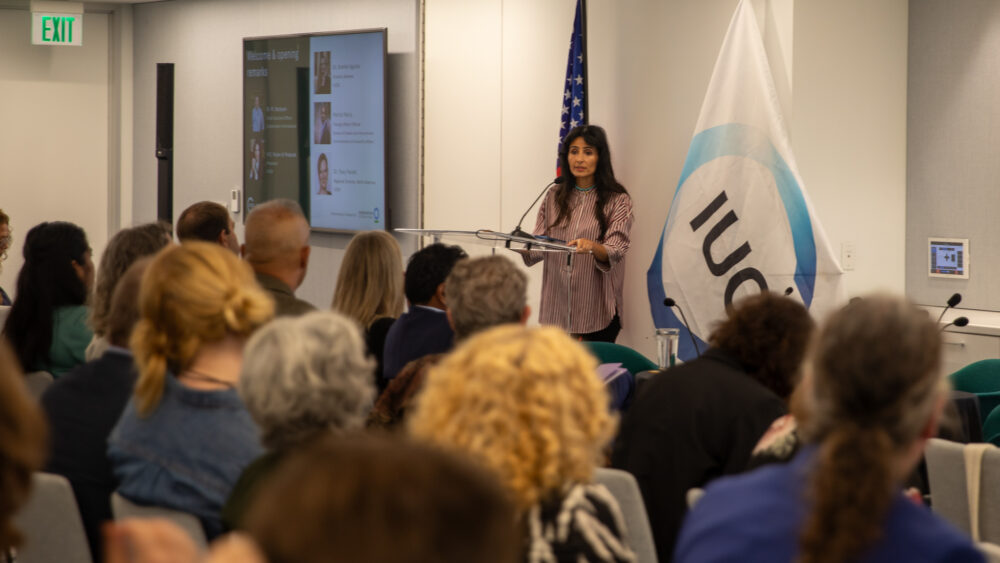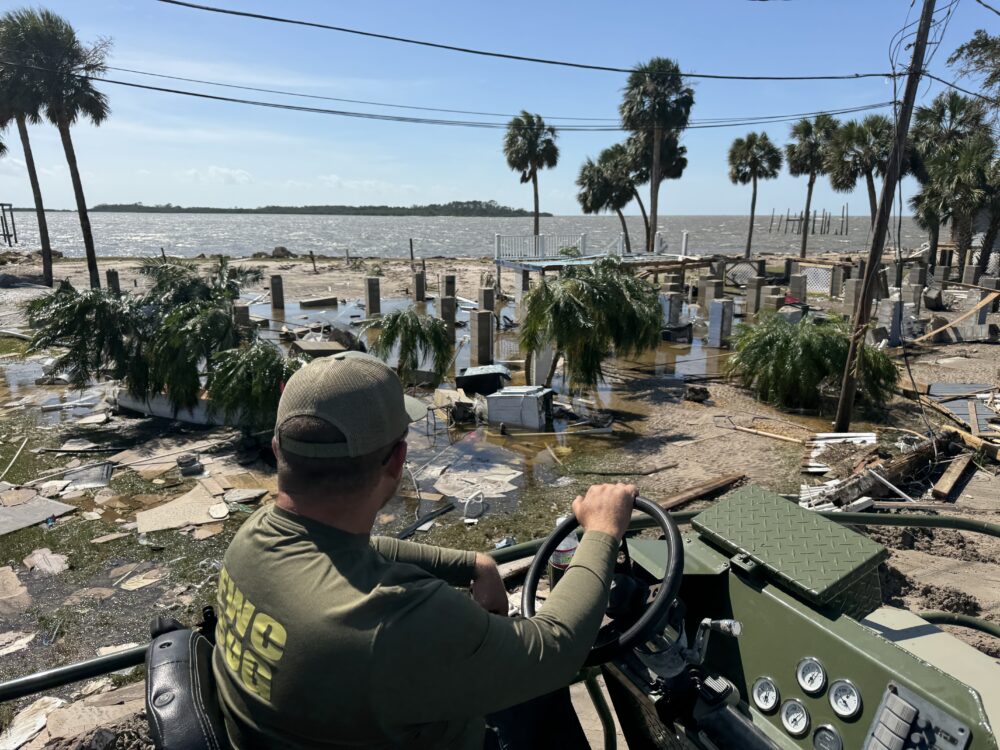We have much more to do and your continued support is needed now more than ever.
Weekly News Roundup- November 8, 2013
What’s happening at National Wildlife Federation this week?

- Nature is Us. Toys and Nature: They Can Play Nice!
- It’s a Whale of a Problem. Oil is hurting the Gulf’s Sperm Whales.
- Hunters for the Hungry: With Support of Nonprofits, Hunters Help to Feed Nation’s Food Insecure.
Sportsmen welcome nomination of BLM chief
Nov 8- A national sportsmen’s coalition welcomes the nomination of Neil Kornze to head the Bureau of Land Management as an opportunity to continue efforts to fully implement oil and gas leasing reforms on public lands.
Kornze, BLM’s principal deputy director, has demonstrated leadership in planning for renewable energy and a commitment to consider energy development’s impacts on fish, wildlife and water as well as hunting and fishing, the coalition Sportsmen for Responsible Energy Development said Thursday.
Coalition leaders added that hunters and anglers will continue to push for follow-through on promised leasing reforms; updated federal hydraulic fracturing rules with full chemical disclosure; reform of the use of categorical exclusions to prevent the circumventing of environmental regulations; and regulations that that develop a competitive permitting process for renewable energy development on public lands.
Artificial Reefs of the Gulf of Mexico: A Review of Gulf State Programs & Key Considerations
Nov 8- Over the past few decades the five Gulf States have built artificial reefs both inshore and offshore with the aim of enhancing recreational fishing and diving opportunities. State and local governments on the Gulf Coast have expressed interest in creating additional artificial reefs with some of the money from the federal penalties resulting from the BP oil disaster.
This white paper, Artificial Reefs of the Gulf of Mexico: A Review of Gulf State Programs & Key Considerations, encourages decision-makers to take environmental considerations into account when developing new artificial reefs. The paper provides a review of existing programs and offers key recommendations as governments consider creating additional artificial reefs.
Artificial reefs are materials placed on the sea floor to attract fish or otherwise influence physical or biological processes related to living marine resources. Artificial reefs attract certain species of fish and therefore have high recreational value for both fishing and diving activities.
Download Artificial Reefs of the Gulf of Mexico: A Review of Gulf State Programs & Key Considerations (pdf).
Follow NWF’s efforts to restore the Gulf of Mexico on Facebook !
Allies Call on the EPA to Clean Up Our Air, Cut Carbon
Nov 7- The National Wildlife Federation joined a coalition of concerned citizens and advocacy groups assembled at the Environmental Protection Agency’s headquarters in order to call for strong carbon protections for currently operating power plants. More than 200 people from across the region voiced their support for safeguards against carbon pollution at today’s listening session. Their voices join millions of others others who have submitted testimony, commented online and appeared at hearings across the country.
“In the tension between business as usual Washington politics and what scientists say is necessary to confront climate change, the Environmental Protection Agency can’t split the moose,” said Felice Stadler, senior director of climate and energy at the National Wildlife Federation. “We need strong, science-based industrial carbon pollution limits to protect America’s wildlife, communities and public health.”
Among the groups calling for action to protect our health and American communities from climate disruption were the Climate Action Coalition, Natural Resources Defense Council, Moms Clean Air Force, National Wildlife Federation, Environmental Defense Fund, League of Conservation Voters and Sierra Club.
Read National Wildlife Federation’s testimonies here and here.
Learn more about what NWF is doing to stop carbon pollution!
Nov 6- The Environmental Protection Agency (EPA) is moving to close gaps in the Clean Water Act that have left the drinking water sources for more than 117 million Americans vulnerable to pollution and destruction. In September, EPA submitted a rule to ensure protections for nearly 20 million acres of wetlands and half of the nation’s streams for intra-agency review. EPA also released a groundbreaking scientific report that confirms what Americans have long known – our waterways are connected. Today, a coalition of environmental and wildlife advocates announced that more than 115,000 Americans have submitted comments in support of EPA’s science report and the pending rule to protect vital parts of our water infrastructure.
Read another letter in support of the science report, signed by more than 180 environmental and wildlife groups, here.
And now here are highlights from NWF in the news:
Associated Press: Opposition forms to proposed ND conservation fund
A coalition spearheaded by a statewide business group is preparing to mount a campaign against a proposed North Dakota conservation fund ballot measure.
National Journal: Enviros, Coal Advocates Push Messaging at EPA Listening Session
A coalition of environmental organizations, including the League of Conservation Voters, Sierra Club, and the National Wildlife Federation, held a press conference mid-morning Thursday to rally support for strict regulations to limit carbon emissions. The press conference was followed by a march led by participants to EPA headquarters, where the listening session was held throughout the day.
Lakefield Standard: Cover crop champions to host field day
They’ve done it themselves for four years, and now Jerry and Nancy Ackermann of rural Lakefield are taking a next step in getting the word out about cover crops, thanks to a National Wildlife Federation Cover Crop Champions grant.
E&E News: ClimateWire: Trying to build a better bridge between climate science and policy
“The central paradox is that as climate change increases and effects become more evident, the need for adaptation will become more apparent,” said Bruce Stein, lead author of one of the studies detailing climate preparedness and director of the Climate Change Adaptation National Advocacy Center of the National Wildlife Federation.
The Gazette: The secret, dirty cost of Obama’s green power push
“They could not have designed a better approach to not detect land conversion,” said Ben Larson, an agricultural expert for the National Wildlife Federation.
Green Bay Press-Gazette: Editorial: Prompt action on Sturgeon Bay report needed to stop asian carp
“We have time to get it right if we act now with some urgency,” said Jordan Lubetkin of the National Wildlife Federation’s Great Lakes Regional Center.

























